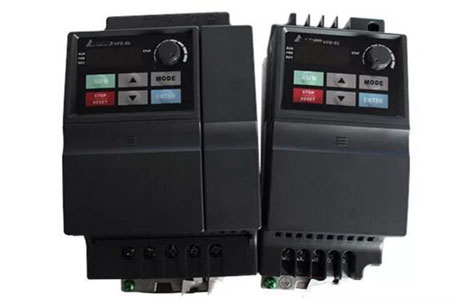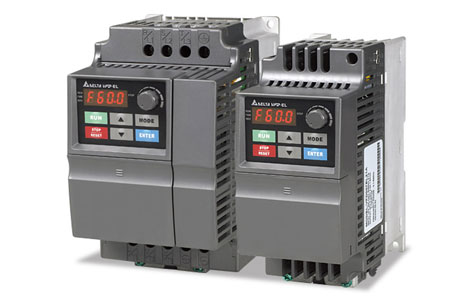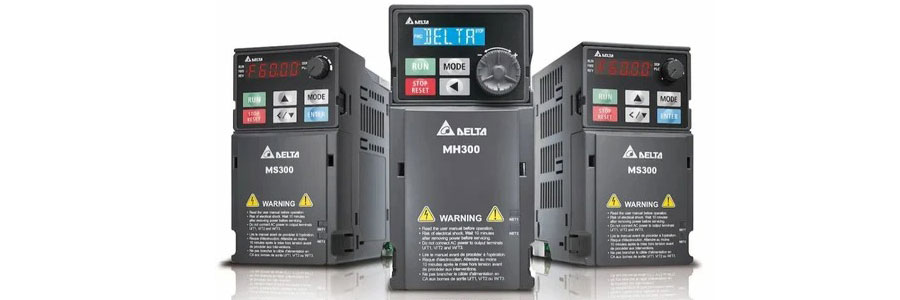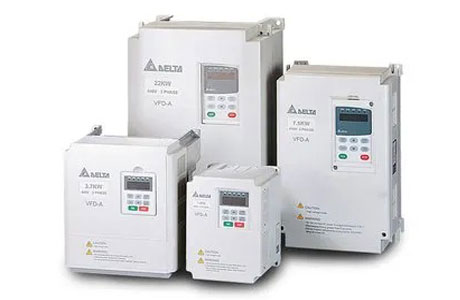VFD Output Voltage
The comprehensive exploration of Variable Frequency Drives (VFDs), with a special focus on a key aspect: output voltage. From industrial automation to energy conservation, VFDs are reshaping how we harness and utilize power.
But what role does output voltage play? How does it influence a VFD’s functionality, and how does a VFD, in turn, control this voltage?
If these questions intrigue you, you’re in the right place. In this blog, we’ll decode the science behind VFD output voltage, explore its interactions with the input voltage, and delve into how it impacts motor terminal voltage. We’ll answer questions like Can a VFD change output voltage? Can it control voltage? And can it increase the voltage?
Understanding VFD Output Voltage
A Variable Frequency Drive (VFD) is a power conversion device. It changes the standard power supply, which has a fixed voltage and frequency, into a form where both voltage and frequency can be adjusted. This enables the control of motor power and speed.
Essentially, the VFD’s output voltage is the power it supplies to the motor. It’s crucial because it directly affects the motor’s speed and torque. More voltage can lead to higher speeds, while less can reduce the speed.
Understanding this key aspect of VFDs helps us grasp their overall functioning and potential.
VFD Input Voltage vs. Output Voltage
The input voltage of a VFD is the power it receives, while the output voltage is what it supplies to the motor. Interestingly, these two don’t always match. Let’s explore why, with two intriguing case studies.
When VFD Output Voltage is Higher than Input Voltage
Here’s a surprise – sometimes, the VFD’s output voltage can exceed its input. This happens when a VFD is equipped with a boost converter. This device steps up the voltage, allowing the VFD to drive the motor at higher speeds.
When VFD Output Voltage is Lower than Input Voltage
In contrast, a VFD’s output voltage can also be lower than its input. This scenario typically occurs when the VFD adjusts the motor’s speed downwards. By reducing the output voltage, it can slow the motor while maintaining efficiency.
The Potential of VFDs to Alter Output Voltage
Can a VFD Change Output Voltage?
In the world of Variable Frequency Drives (VFDs), one question often arises – can a VFD change output voltage? The answer is a resounding yes. A VFD, by design, can vary its output voltage. This ability allows it to control the motor’s speed and torque, offering great flexibility in different applications.
The Role of VFDs in AC Voltage Adjustment
Shifting gears, let’s talk about AC voltage adjustment. Here too, the Role of VFDs is crucial. They can modulate the frequency and amplitude of the AC voltage, allowing for precise motor speed control. This makes VFDs incredibly versatile, empowering industries with enhanced control over their motor-driven systems.
Decoding the VFD Supply Output
How do we measure the output of a VFD in a practical setting?
To measure the output of a Variable Frequency Drive (VFD), using a multimeter, a commonly used tool for measuring electrical values. First, take the red (positive) lead from the multimeter and place it on the VFD’s negative (-) terminal. Then, take the black (negative) lead from the multimeter and touch each of the VFD’s input and output terminals, one after the other. If the VFD is functioning correctly, the multimeter will show a consistent voltage drop between 0.299 to 0.675 volts DC for each terminal.
What Constitutes the Output of a VFD?
Diving deeper into VFDs, we encounter the question – what exactly is the output of a VFD? Essentially, the output of a VFD is the power it delivers to the electric motor. This power is characterized by a particular voltage, frequency, and waveform, all tailored to control the motor’s performance optimally.
Understanding the Output Wave of a VFD
So, what about the output wave of a VFD? VFDs typically output a waveform known as Pulse Width Modulated (PWM) wave. This unique wave, through its varying pulse widths, enables precise control of voltage and frequency, delivering smooth and efficient motor operation.
VFDs and Motor Terminal Voltage
How Does a VFD Vary the Motor Terminal Voltage?
Motor terminal voltage – what is it and how does a VFD influence it? In simple terms, it’s the voltage at the motor’s terminals, the point where it connects to power.
The VFD controls this voltage via its output. It alters the frequency and amplitude of the voltage based on the motor’s needs. By doing so, it can accurately manage the motor’s speed and torque, ensuring optimal performance.
We’re about to embark on a journey into the voltage range and control capabilities of VFDs in the next section. Stick around for more fascinating insights.
The Voltage Range and Control Capabilities of VFDs
Examining the VFD Voltage Range
Every VFD has a specific voltage range. This range sets the limits within which the VFD can operate safely and efficiently. It’s critical for users to adhere to this range to prevent damage to both the VFD and the motor it drives. When considering models like the 2.2 kW Variable Frequency Drive, it’s essential to ensure that the operating voltage matches your system requirements.
Can a VFD Control Voltage? Analyzing the Possibilities
Can a VFD control voltage? Indeed, it can! The voltage control capability is one of the key features of a VFD. By altering the frequency and amplitude of the output voltage, a VFD can regulate the motor’s speed, torque, and energy consumption.
The Remarkable Abilities of VFDs: Increasing and Adjusting Voltage
Can a VFD Increase Voltage? Investigating the Capabilities
One of the fascinating questions surrounding VFDs is whether they can increase voltage. The truth is, while a typical VFD cannot increase voltage beyond its input voltage, specific designs with built-in boost converters can indeed raise the voltage, enabling a wider range of motor speeds.

Does a VFD Adjust the Voltage? Evaluating the Facts
Finally, does a VFD adjust voltage? Absolutely. In fact, voltage adjustment is one of the key functions of a VFD. It can precisely adjust the output voltage, tailoring it to the exact requirements of the motor, which enables optimal control of motor speed and torque.
Conclusion
Our deep dive into Variable Frequency Drives (VFDs) has demonstrated their versatility and control power. We’ve learned that a VFD can adjust, regulate, and even boost output voltage, which can have profound effects on motor speed and torque. This understanding unravels new possibilities for efficient power management. We trust that these insights have demystified VFD output voltage, leaving you better equipped to leverage this crucial technology. Stay connected for more insightful discussions!




